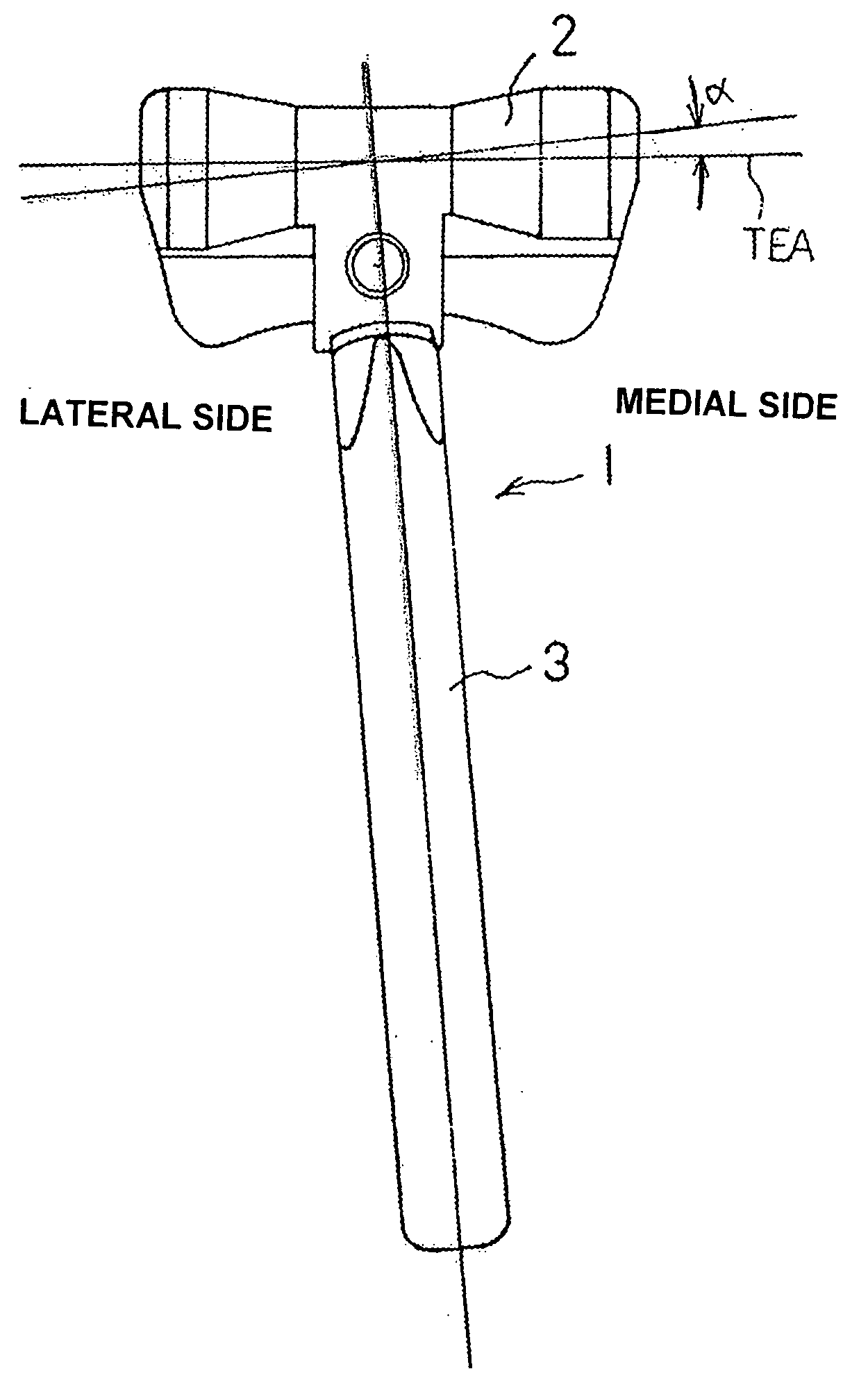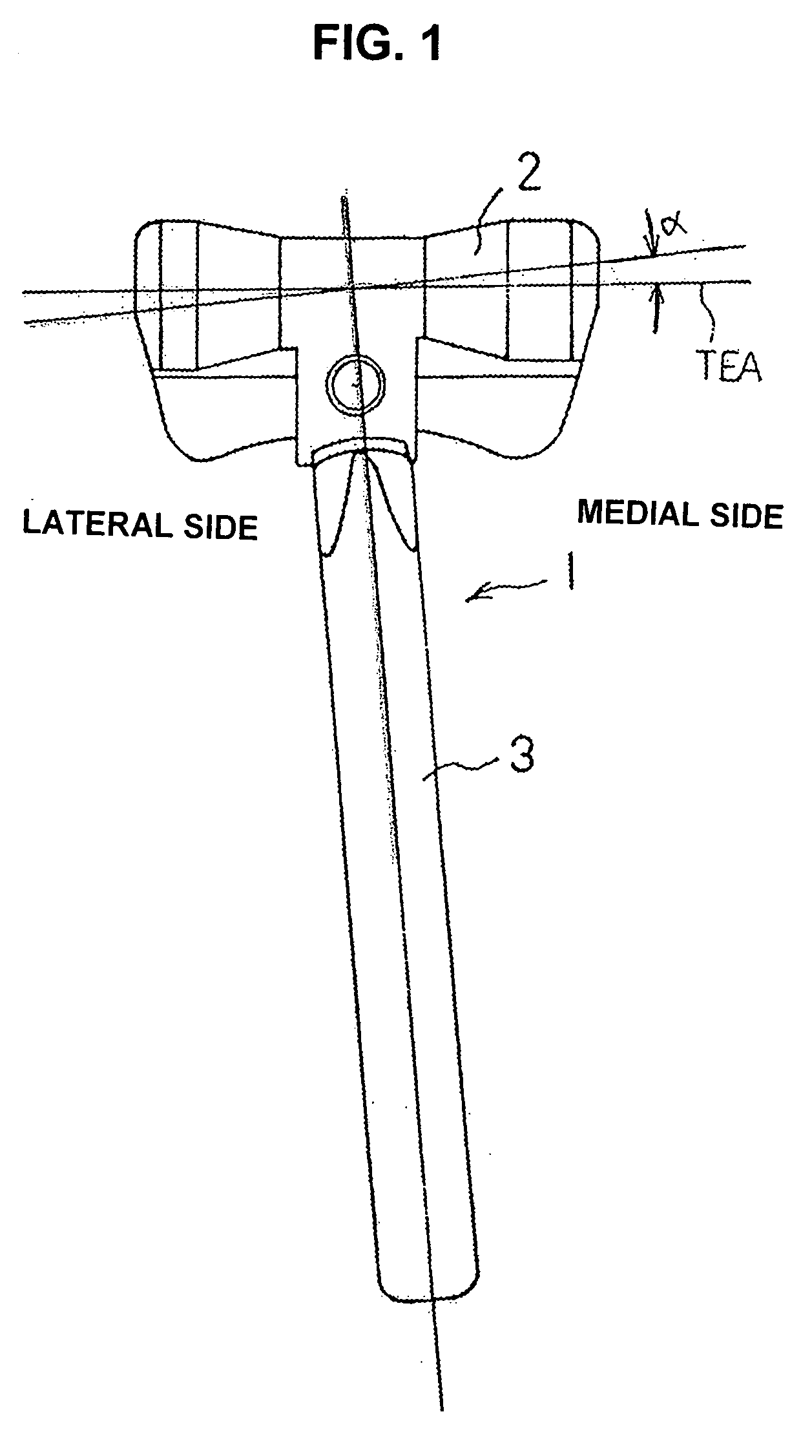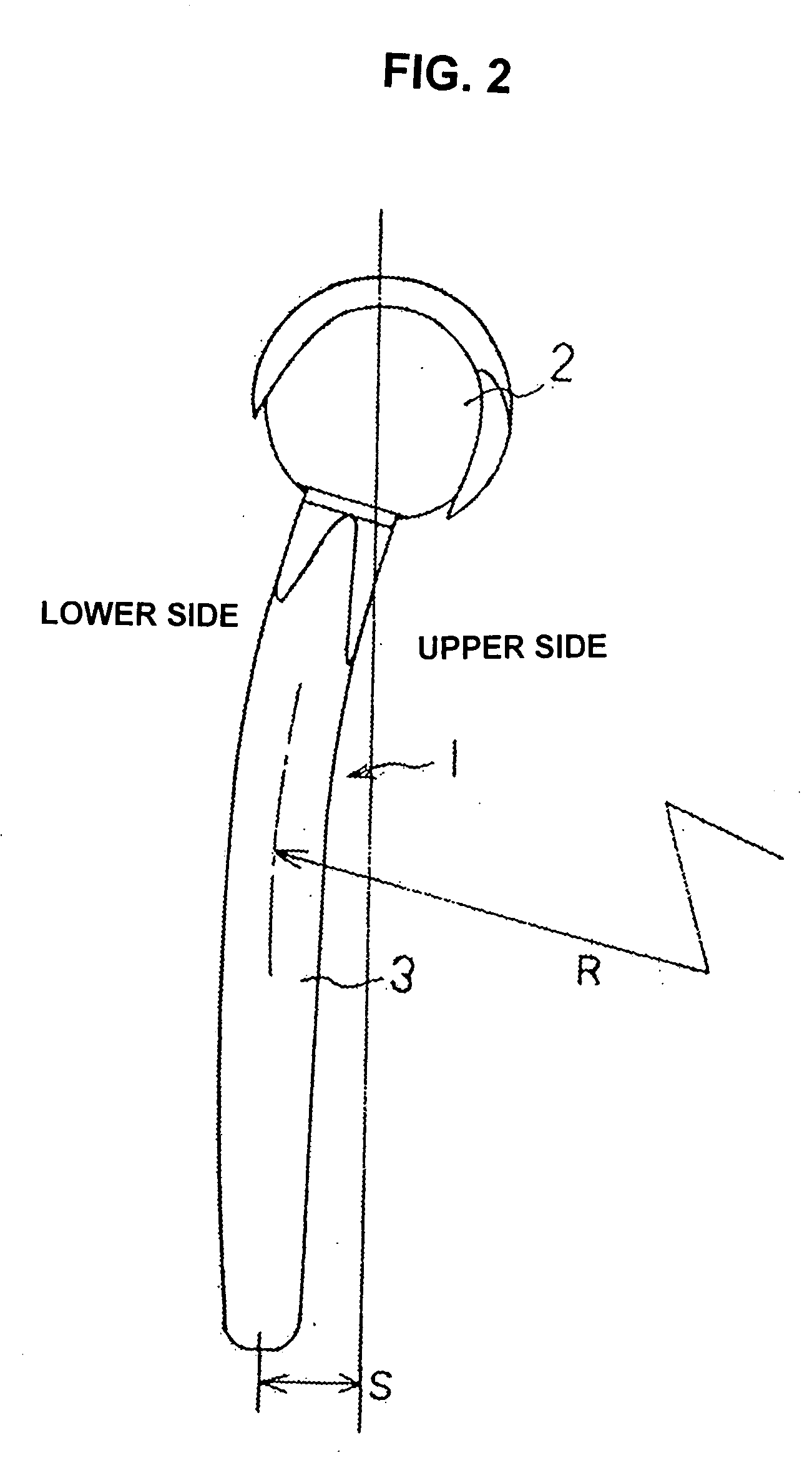Artificial elbow joint
a technology of artificial elbow and elbow joint, which is applied in the field of artificial elbow joint, can solve the problems of inability to obtain sufficient support strength, difficulty in surgery, and inferiority of artificial elbow joint to biological joint, and achieve the effects of reducing the difficulty of surgery, and high skill level
- Summary
- Abstract
- Description
- Claims
- Application Information
AI Technical Summary
Benefits of technology
Problems solved by technology
Method used
Image
Examples
Embodiment Construction
[0041]Embodiments of the present invention will be now described below with reference to the drawings. FIG. 1 is a top plan view of a humeral component 1, while FIG. 2 is a side elevational view thereof. The humeral component 1 is comprised of a trochlea 2 and a stem 3. The trochlea 2 provides a joint function with the joint surface of an ulnar component that will be described subsequently, and it is made either of a metal compatible with the human body, such as a titanium alloy, cobalt chrome molybdenum alloy, or stainless steel alloy or the like, or of a medical ceramic or the like. The trochlea 2 is formed in a substantially cylindrical shape, and its middle portion is in a hollowed-out drum shape like that of the trochlea of a biological elbow joint. The positions and directions referred to in the description below are based on the configuration of the arm in which the humeral and ulna are extended with the palm facing upward.
[0042]The stem 3 of the humeral component 1 is made o...
PUM
 Login to View More
Login to View More Abstract
Description
Claims
Application Information
 Login to View More
Login to View More - R&D
- Intellectual Property
- Life Sciences
- Materials
- Tech Scout
- Unparalleled Data Quality
- Higher Quality Content
- 60% Fewer Hallucinations
Browse by: Latest US Patents, China's latest patents, Technical Efficacy Thesaurus, Application Domain, Technology Topic, Popular Technical Reports.
© 2025 PatSnap. All rights reserved.Legal|Privacy policy|Modern Slavery Act Transparency Statement|Sitemap|About US| Contact US: help@patsnap.com



